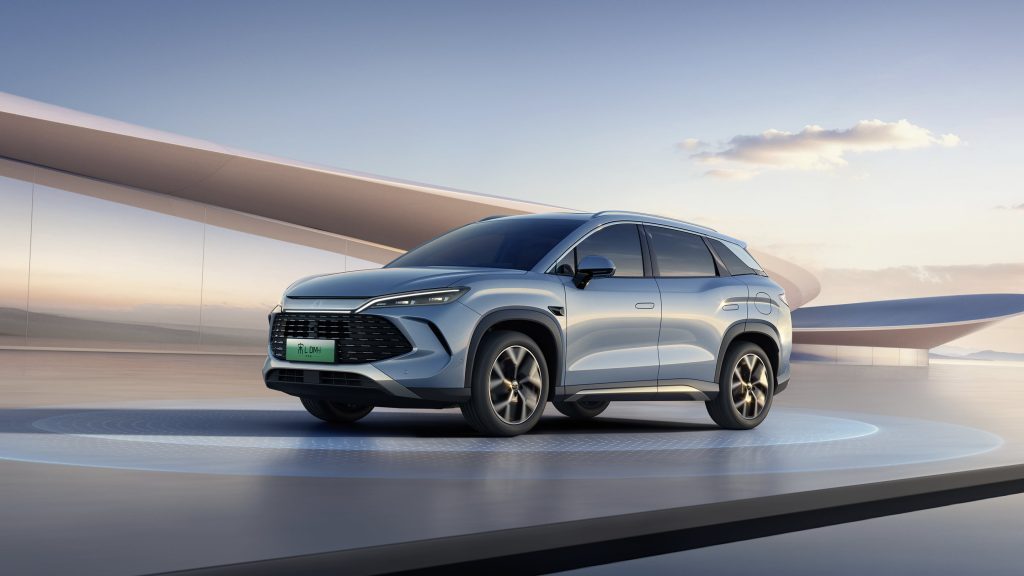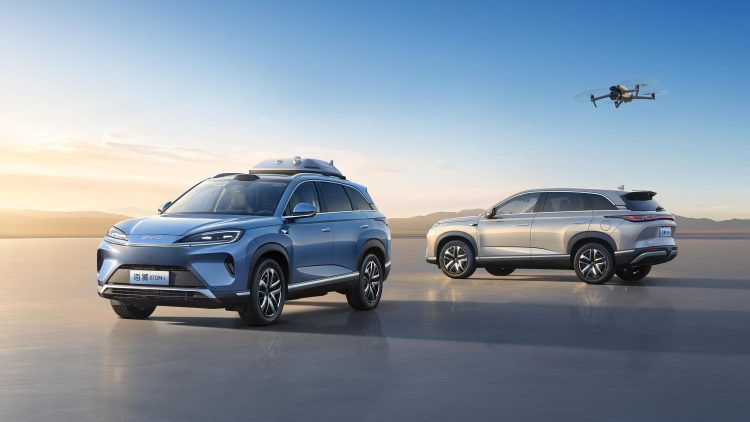With the global shift towards sustainability and green mobility, electric vehicles (EVs) are increasingly seen as a key solution for the future of transportation. However, to break through the market dominance of traditional internal combustion engine (ICE) vehicles, EVs face a number of significant challenges. These challenges include the high upfront cost, limited charging infrastructure, range anxiety, and consumer skepticism towards new technologies. Fortunately, cutting-edge technologies are making significant strides in overcoming these barriers and accelerating the widespread adoption of electric vehicles.
This article will explore several emerging technologies that are poised to help overcome these obstacles, and how they can play a crucial role in making electric vehicles more accessible, affordable, and appealing to consumers.
1. Reducing the Cost Barrier: Advances in Battery Technology
1.1 Solid-State Batteries
One of the major barriers to the widespread adoption of electric vehicles is the high cost of the battery, which accounts for a significant portion of an EV’s price. As battery technology improves, particularly with innovations like solid-state batteries, the cost of EVs is expected to decrease.
- What are Solid-State Batteries?
Solid-state batteries are an emerging technology that uses a solid electrolyte instead of the liquid electrolyte used in conventional lithium-ion batteries. This change can result in batteries that are not only safer (less prone to overheating or catching fire) but also have higher energy density. Higher energy density means EVs can go further on a single charge, increasing their appeal to consumers who are concerned about range limitations. - Cost Reduction Potential
As solid-state batteries become more commercially viable, they are expected to be cheaper to manufacture. This could significantly reduce the overall cost of electric vehicles, making them more affordable for the mass market and helping to overcome the price barrier that has historically hindered EV adoption.
1.2 Battery Recycling and Second-Life Applications
Another critical development in battery technology involves the recycling of used batteries and their second-life applications. As EV adoption grows, the demand for raw materials like lithium, cobalt, and nickel is increasing, raising concerns about the environmental and ethical implications of battery production.
- Battery Recycling: Cutting-edge recycling technologies are being developed to extract valuable materials from used batteries. This not only reduces the environmental impact of mining but also helps lower the cost of raw materials for new batteries, further reducing the cost of EVs.
- Second-Life Batteries: When EV batteries no longer meet the requirements for vehicle use, they can still be used in stationary applications, such as energy storage systems. This second-life use helps maximize the value of EV batteries and reduces the overall cost of EV ownership.
2. Expanding Charging Infrastructure: Fast Charging and Wireless Charging Solutions
2.1 Ultra-Fast Charging Networks
One of the key factors that hold back the adoption of electric vehicles is the lack of sufficient charging infrastructure. Unlike gasoline vehicles, which can be refueled in a matter of minutes at any gas station, charging an electric vehicle takes much longer, particularly when using standard charging stations.
- Ultra-Fast Charging: New technologies in ultra-fast charging are dramatically reducing the time required to recharge an EV. For example, 350 kW charging stations allow EVs to be charged to 80% in just 20-30 minutes. This technology is critical in addressing “range anxiety” and making EVs more practical for long-distance travel.
- Network Expansion: As more ultra-fast charging stations are installed globally, the accessibility of EV charging will increase, making it easier for consumers to transition from gasoline vehicles to electric vehicles.
2.2 Wireless Charging Technology
Another breakthrough in charging technology is wireless charging. This technology allows electric vehicles to charge without the need for physical cables, making the charging process more convenient.
- How Does Wireless Charging Work?
Wireless charging, or inductive charging, uses electromagnetic fields to transfer energy from a charging pad embedded in the ground to a receiver on the EV’s undercarriage. This technology can be particularly useful in public spaces, such as parking lots or highways, where drivers can simply park over the charging pad and their vehicle will begin charging automatically. - Impact on Adoption
Wireless charging eliminates the need for users to manually plug in their vehicles, making the charging process more seamless and convenient. As this technology becomes more widely available, it could significantly improve the user experience and contribute to greater EV adoption.
3. Overcoming Range Anxiety: Advances in Energy Efficiency
3.1 Vehicle-to-Grid (V2G) Technology
One of the biggest concerns for consumers considering an electric vehicle is range anxiety – the fear that their car will run out of battery before they can reach a charging station. However, vehicle-to-grid (V2G) technology is addressing this concern by enabling electric vehicles to not only draw power from the grid but also send power back to the grid.
- How V2G Works: When an EV is parked and plugged into a charging station, it can feed energy back into the grid, helping to balance supply and demand. This is particularly useful during peak times when demand for electricity is high.
- Benefits to Consumers: V2G technology allows consumers to “sell” electricity back to the grid, creating a new revenue stream for EV owners and turning their vehicles into valuable assets that help stabilize the energy grid. Additionally, as V2G technology evolves, it could enable vehicles to charge during off-peak hours, further reducing the cost of owning an EV.
3.2 Energy Efficiency and Regenerative Braking
Advancements in energy efficiency are also helping increase the effective range of electric vehicles. One such technology is regenerative braking, which recovers energy during braking and sends it back to the battery.
- Energy Recovery: Regenerative braking systems allow EVs to recover some of the energy lost during braking, increasing their overall range. This technology is widely used in modern electric vehicles, helping to extend driving distances and reduce energy consumption.
- Optimized Energy Use: Future developments in energy management systems will further optimize how EVs use energy, ensuring that the vehicle operates as efficiently as possible. This means that even with a smaller battery, an EV could offer a comparable range to current models with larger batteries.

4. Autonomous Driving and Smart Mobility Solutions
4.1 Autonomous Electric Vehicles (AEVs)
Another exciting frontier in electric vehicle technology is autonomous driving. Electric vehicles are particularly well-suited for autonomous driving, as they rely on electric motors that are easier to control than traditional internal combustion engines.
- Benefits of AEVs: Autonomous vehicles can increase road safety, reduce traffic congestion, and provide mobility solutions for individuals who are unable to drive. Additionally, autonomous EVs can be part of shared mobility fleets, making electric vehicles accessible without the need for ownership.
- Impact on EV Adoption: As autonomous driving technology becomes more mature, it could lead to the rise of shared electric fleets, making electric mobility available to more people, including those who cannot afford to buy a car. This, in turn, could accelerate the adoption of electric vehicles and reduce the overall cost of transportation.
4.2 Smart Mobility Platforms
The integration of electric vehicles with smart mobility platforms can create a more efficient and user-friendly transportation system. These platforms can provide users with on-demand access to electric vehicles, along with real-time data on charging station availability, vehicle health, and traffic conditions.
- On-Demand EV Services: By using mobile apps or other smart systems, users can book electric vehicles on demand, either for short-term rentals or shared rides. This could make EVs more accessible to a broader range of consumers, especially in urban areas where owning a car is less practical.
5. Overcoming Consumer Skepticism and Changing Perceptions
Beyond technological advancements, one of the key challenges in accelerating EV adoption is changing consumer perceptions. Many consumers remain skeptical about the performance, reliability, and cost of electric vehicles compared to traditional cars. However, as technology continues to improve, these perceptions are gradually changing.
- Education and Incentives: Governments and manufacturers are increasingly offering incentives such as tax credits, rebates, and subsidies to make electric vehicles more affordable. Additionally, raising consumer awareness about the environmental and economic benefits of EVs can help drive their adoption.
- Improved EV Performance: As battery technology, charging infrastructure, and vehicle performance improve, consumers will become more confident in their ability to rely on electric vehicles for daily use, long trips, and other tasks traditionally reserved for gasoline-powered cars.
Conclusion: A Future Powered by Electric Vehicles
With the ongoing advancements in battery technology, charging infrastructure, energy efficiency, and autonomous driving, the barriers to widespread adoption of electric vehicles are steadily being removed. As these technologies mature, the cost of electric vehicles will decrease, charging will become faster and more convenient, and range anxiety will be minimized. The future of transportation is increasingly electric, and with the help of cutting-edge innovations, electric vehicles will soon be the dominant force in the automotive market, breaking down the traditional barriers that have kept gasoline-powered vehicles at the forefront for over a century.











































